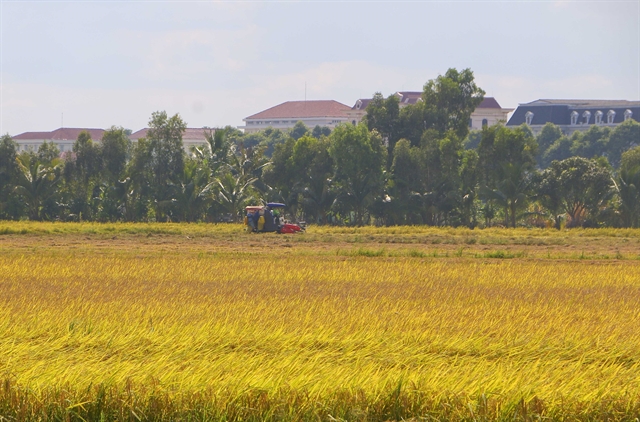 Society
Society

The Cửu Long (Mekong) Delta province of Hậu Giang has developed many effective models for building new-style rural areas to improve the lives of its people.

|
| High-quality rice being grown in Hậu Giang Province’s Vị Thuỷ District. The province has developed many effective farming models, including for growing high-quality rice, to create new-style rural areas. – VNA/VNS Photo Duy Khương |
HẬU GIANG – The Cửu Long (Mekong) Delta province of Hậu Giang has developed many effective models for building new-style rural areas to improve the lives of its people.
Phụng Hiệp District’s Hiệp Hưng Commune was recognised as a new-style rural commune last month.
It has developed many effective farming models that fetch farmers high incomes, including breeding eels in a mud-free tank and snakeskin gourami fish and growing milk apples and seedless lemons.
It has 145 of them that promise to earn farmers VNĐ100 million (US$42,300) a year, according to local authorities.
The commune’s per capita income is now VNĐ55 million ($2,300), an increase of VNĐ40 million since 2010.
Its roads are paved and more than 3,500 households grow trees and flowers to beautify 51km of them.
Locals have donated lands, money and labour to build the roads and other infrastructure.
The building of the 10km Hậu Giang 3 Canal Road in 2015 was for instance partly funded by donations.
Nguyễn Văn Hên, a resident of the district’s Quyết Thắng A Hamlet, said: “After the road was built, it not only facilitates transport but also beautifies the hamlet since people have planted flowers along the road.”
The province’s socio-political organisations have launched many campaigns to build new-style rural areas and received a warm response.
The province Women’s Union has launched a campaign with “five haves and four cleans” and the “flower road and clean house” model.
The five haves that are needed are knowledge, livelihood, cultured life, health, and safe home, and the four cleans refer to the kitchen, house, street, and garden.
In Long Mỹ District’s Thuận Hưng Commune, all 96 households in Hamlet 9 participated in the “flower road and clean house” campaign launched in the hamlet a month ago and grew flowers along the road in front of their houses.
Nguyễn Thị Hạnh, a local, said people’s lives have improved significantly, and many women have become adept in the “five haves and four cleans” model.
Nguyễn Thị Thuỳ Linh, chairwoman of the province Women’s Union, said the aim is to take the “flower road and clean house” model to at least 20 roads that are at least two kilometres long in new-style rural communes this year.
Bùi Hữu Lộc, secretary of the province’s Hồ Chí Minh Communist Youth Union, said the Youth Union’s “Hậu Giang youths build new-style rural areas” campaign has been implemented widely and focuses on building rural infrastructure, protecting the environment and developing the economy of young people.
The Youth Union at all levels is expanding its good and proficient production models to help build more new-style rural areas.
Trần Thanh Thì, a member, has adopted a model that involves breeding frogs and fish and growing fruits in his 5,000sq.m orchard.
He earns more than VNĐ100 million ($42,300) a year.
Huỳnh Thành Hữu, head of the province’s co-ordination office for national target programmes, said campaigns for new-style rural areas have been implemented well, and the province has many products under the national “One Commune- One Products” (OCOP) programme.
It has 175 OCOP products rated between three and four stars, which have made a significant contribution to building new-style rural areas, he said.
Through the campaigns, the province has developed many effective production models and policies that greatly help develop rural areas, he said.
In the 12 years since the national new-style rural areas programme began, the province has achieved the status for 38 of its 51 communes.
They include seven advanced new-style rural communes.
A new-style rural commune must meet 19 criteria related to infrastructure, irrigation, electricity, environment, income, education, healthcare, social security, and culture.
The advanced ones must meet all 19 with higher standards across all.
The average income of people in the new-style rural communes is VNĐ59 million ($2,500) a year.
The province has some significant achievements in building new-style rural areas: Its Đại Thành Commune in Ngã Bảy Town became the delta’s first in 2013.
Châu Thành A, Ngã Bảy and Vị Thanh cities have all been recognised as new-style rural communes.
The province aims to create three new new-style rural communes this year and have one more district recognised as having 100 per cent of such communes. – VNS




